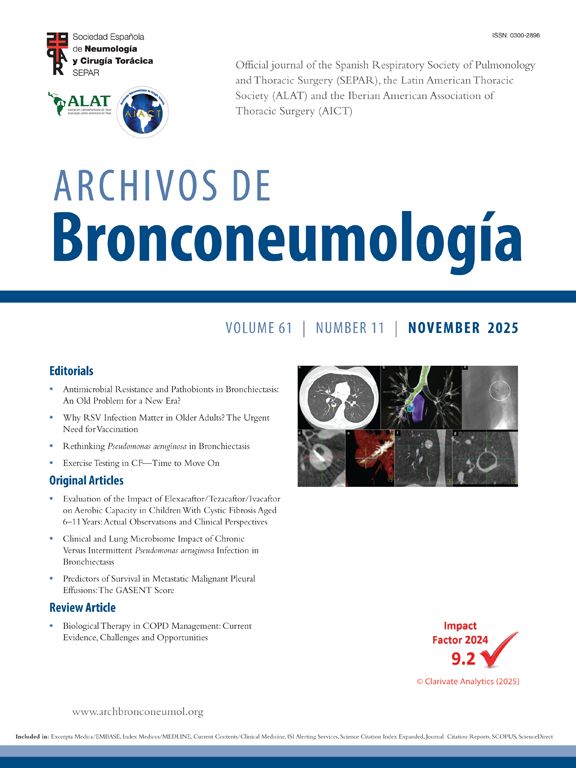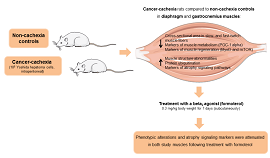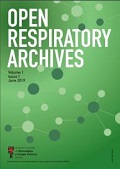Bordetella bronchiseptica is a pleomorphic, gram-negative coccobacillus that commonly causes respiratory tract infections in dogs, cats, and rabbits, and occasionally in humans [1,2]. In humans, infections are relatively rare and typically occur in immunocompromised individuals, such as those with human immunodeficiency virus (HIV) or other conditions that compromise the immune system [3].
We describe the case of a 46-year-old male with no known medical history who presented to the emergency department with cough, fever, and shortness of breath. On initial assessment, his heart rate was 114/min, respiratory rate was 18/min, oxygen saturation was 88% on room air, temperature was 101.2°F, and blood pressure was normal. Chest examination revealed rales at the left lung base.
Initial laboratory data showed a white blood cell count of 16K/μL with neutrophilia. Serum electrolytes and liver function tests were within normal limits. Arterial blood gas analysis showed a pH of 7.42, pCO2 of 42mmHg, and pO2 of 138mmHg on 2l/min of oxygen via nasal cannula. A chest X-ray showed bronchial wall thickening suggesting bronchitis. A computed tomography (CT) scan of the chest showed left lower lobe consolidation with air bronchograms (Fig. 1). The patient was started on ceftriaxone and azithromycin. On the second day of hospitalization, the patient developed worsening hypoxemia, respiratory failure, and hypotension, and was transferred to the intensive care unit. He was intubated due to worsening respiratory distress, resuscitated with intravenous fluids, and started on norepinephrine and vasopressin. Antibiotics were changed to vancomycin and cefepime.
Blood, sputum, and urine cultures were negative. Serum histoplasmosis antibodies, urine histoplasma antigen, serum coccidioidomycosis antibodies, and a viral PCR panel were also negative. An extensive immunological workup was unremarkable. The patient underwent bronchoscopy with bronchoalveolar lavage (BAL). BAL studies, including bacterial, fungal, acid-fast bacillus (AFB) cultures, and Mycobacterium tuberculosis (MTB) PCR, were negative.
However, on day five of hospitalization, both BAL and blood cultures grew B. bronchiseptica. Antibiotics were changed to meropenem, colistin, and doxycycline. Despite these interventions, the patient's hospital course was complicated by refractory septic shock, acute renal failure, shock liver, and disseminated intravascular coagulation, and he died. Further inquiry revealed that the patient had three dogs at home. An autopsy confirmed the presence of B. bronchiseptica in consolidated left lung tissue.
B. bronchiseptica infections in humans can range from mild upper respiratory symptoms to severe pneumonia. Reports of infection in immunocompetent hosts are extremely rare [4]. Several antibiotics, including minocycline, tigecycline, doxycycline, colistin, and meropenem, have shown efficacy against B. bronchiseptica[5]. Septic shock and mortality from B. bronchiseptica in immunocompetent individuals without comorbidities are exceptionally uncommon. The patient described in this case had no identifiable risk factors or underlying conditions. The autopsy confirmed the lung infection and ruled out other causes of disease.
This case contributes to the limited literature on severe and fatal B. bronchiseptica pneumonia in an immunocompetent individual. In conclusion, while rare, B. bronchiseptica pneumonia in immunocompetent patients can be life-threatening.
CRediT authorship contribution statementAuthor has contributed substantially to obtaining the results and preparation of the manuscript in accordance with ICMJE criteria.
Declaration of generative AI and AI-assisted technologies in the writing processNone declared.
FundingNone declared.
Conflicts of interestNone declared.











